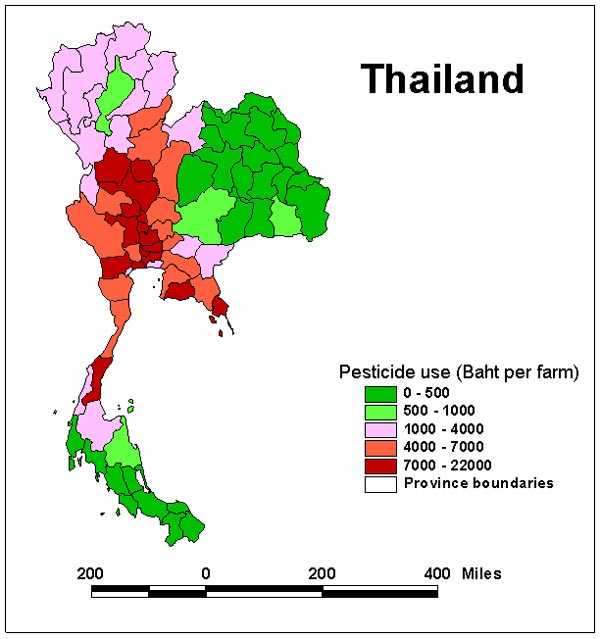Essential oils are often used in aromatherapy, which is a form of alternative medicine.
However, some of the health claims associated with them are controversial.
This article explains what you need to know about essential oils and their health effects.
What Are Essential Oils?
Essential oils are compounds extracted from plants.
The oils capture the plant’s scent and flavor, also called its “essence.”
Unique aromatic compounds give each essential oil its characteristic essence.
Essential oils are obtained through distillation (via steam and/or water) or mechanical methods, such as cold pressing.
Once the aromatic chemicals have been extracted, they are combined with a carrier oil to create a product that’s ready for use.
The way the oils are made is important, as essential oils obtained through chemical processes are not considered true essential oils.
Bottom Line: Essential oils are concentrated plant extracts that retain the natural smell and flavor, or “essence,” of their source.
How Do Essential Oils Work?
Essential oils are most commonly used in the practice of aromatherapy. They are either inhaled, or diluted then rubbed on the skin.
Essential oils are not meant to be swallowed.
The chemicals in essential oils can interact with your body in a number of ways.
When applied to your skin, some plant chemicals are absorbed (1, 2).
It’s thought that certain methods can improve absorption, such as applying with heat or to different areas of the body. However, research in this area is lacking (3, 4).
Inhaling the aromas from essential oils can stimulate areas of your limbic system, which is a part of your brain that plays a role in emotions, behaviors, sense of smell and long-term memory (5).
Interestingly, the limbic system is heavily involved in forming memories. This can partly explain why familiar smells can trigger memories or emotions (6, 7).
The limbic system also plays a role in controlling some unconscious physiological functions, such as breathing, heart rate and blood pressure. Some people claim that essential oils can exert a physical effect on your body in this way.
However, this has yet to be confirmed in studies.
Bottom Line: Essential oils can be inhaled or applied to the skin. They may stimulate your sense of smell or have medicinal effects when absorbed.
Popular Types
There are more than 90 types of essential oils, each with its own unique smell and potential health benefits.
Here’s a list of 10 popular essential oils and the health claims associated with them:
- Peppermint: Used to boost energy and help with digestion.
- Lavender: Used for stress relief.
- Sandalwood: Used to calm nerves and help with focus.
- Bergamot: Used to reduce stress and improve skin conditions like eczema.
- Rose: Used to improve mood and reduce anxiety.
- Chamomile: Used for improving mood and relaxation.
- Ylang-Ylang: Used to treat headaches, nausea and skin conditions.
- Tea Tree: Used to fight infections and boost immunity.
- Jasmine: Used to help with depression, childbirth and libido.
- Lemon: Used to aid digestion, mood, headaches and more.
Bottom Line: There are over 90 commonly used essential oils, each associated with certain health claims. Popular oils include peppermint, lavender and sandalwood.
Health Benefits of Essential Oils
Despite their widespread use, little is known about the effectiveness of essential oils in treating health conditions.
Here’s a look at the evidence for some of the common health problems that essential oils and aromatherapy have been used to treat.
Stress, Anxiety and Depression
It has been estimated that 43% of people who have stress and anxiety use some form of alternative therapy to help with their condition (8).
Regarding aromatherapy, initial studies have been quite positive. Many have shown that the smell of some essential oils can work as a complementary therapy to treat anxiety and stress (9, 10, 11).
However, due to the scents of the compounds, it’s hard to conduct blinded studies and rule out biases. Because of this, many reviews on the stress- and anxiety-relieving effects of essential oils have been inconclusive (12, 13).
Interestingly, using essential oils during a massage may help relieve stress, although the effects may only last while the massage is taking place (14).
A recent review of over 201 studies found that only 10 were robust enough to analyze. It also concluded that aromatherapy was ineffective at treating anxiety (15).
Headaches and Migraines
In the ’90s, two small studies found that dabbing a peppermint oil and ethanol mixture on participants’ foreheads and temples relieved headache pain (16, 17).
Recent studies have also found positive effects against headaches when applying peppermint and lavender oil to the skin (18, 19).
It has also been suggested that applying a mixture of chamomile and sesame oil to the temples may effectively treat headaches and migraines. This is a traditional Persian headache remedy (20).
However, more high-quality studies are needed on this.
Sleep and Insomnia
Smelling lavender oil has been shown to positively affect the sleep quality of women after childbirth, as well as patients with heart disease (21, 22).
One review examined 15 studies on essential oils and sleep. The majority of studies showed that smelling the oils (mostly lavender) had positive effects on sleeping habits (23).
Reducing Inflammation
It has been suggested that essential oils may help fight inflammatory conditions. Some test-tube studies show that they have anti-inflammatory effects (24, 25).
One mouse study found that ingesting a combination of thyme and oregano essential oils helped induce the remission of colitis. Two rat studies on caraway and rosemary oils found similar results (26, 27, 28).
However, very few human studies have examined the effects of these oils on inflammatory diseases. Their effectiveness and safety are unknown (29, 30).
Antibiotic and Antimicrobial
The rise of antibiotic-resistant bacteria has renewed interest in the search for other compounds that can fight bacterial infections.
Essential oils, such as peppermint and tea tree oil, have been investigated extensively in test tubes for their antimicrobial effects. In fact, they have shown some positive results (31, 32, 33, 34, 35, 36, 37, 38, 39).
However, while test-tube study results are interesting, they do not necessarily reflect what’s happening within your body. They don’t prove that a particular essential oil could effectively treat bacterial infections in humans.
Bottom Line: Essential oils may have some interesting applications for health. However, more research is needed in humans.
Other Uses
Essential oils have many uses outside of aromatherapy.
Many people use them to scent their homes or freshen up things like laundry.
They are also used as a natural scent in homemade cosmetics and high-quality natural products.
It has also been suggested that essential oils could provide a safe and environmentally friendly alternative to man-made mosquito repellents, such as DEET.
However, results of their effectiveness have been mixed.
Studies have shown that some oils, such as citronella, may effectively repel certain types of mosquitoes for around 2 hours. Protection time may be extended up to 3 hours when it is used in combination with vanillin.
Despite this, no oils have been as effective as DEET at preventing bites from all species of mosquito for long periods of time (40, 41, 42, 43, 44, 45).
The properties of essential oils also indicate that some of them could be used industrially for extending the shelf life of foods (39, 46, 47, 48).
Bottom Line: Aromatherapy isn’t the only use for essential oils. They can be used in and around the home, as a natural mosquito repellent or industrially to make cosmetics.
How to Choose The Right Essential Oils
Many companies claim that their oils are “pure” or “medical grade.” However, these terms aren’t universally defined and therefore hold little weight.
Given that it is an unregulated industry, the quality and composition of essential oils can vary greatly (49).
Keep the following tips in mind in order to choose only high-quality oils:
- Purity: Find an oil that contains only aromatic plant compounds, without additives or synthetic oils. Pure oils usually list the plant’s botanical name (such as Lavandula officinalis), rather than terms like “essential oil of lavender.”
- Quality: True essential oils are the ones that have been changed the least by the extraction process. Choose a chemical-free essential oil that has been extracted through distillation or mechanical cold pressing.
- Reputation: Purchase a brand with a reputation for producing high-quality products.
Bottom Line: High-quality oils only use pure plant compounds extracted by distillation or cold pressing. Avoid oils that have been diluted with synthetic fragrances, chemicals or oils.
Safety and Side Effects
Just because something is natural doesn’t mean it’s safe.
Plants and herbal products contain many bioactive compounds, which may be harmful to your health in some cases. Essential oils are no different.
However, when inhaled or combined with a base oil for use on your skin, most essential oils are considered safe.
Nevertheless, they may cause some side effects (50):
- Rashes.
- Asthma attacks.
- Headaches.
- Allergic reactions.
While the most common side effect is a rash, essential oils can cause more serious reactions, and they have been associated with one case of death (51).
The oils that have most commonly been associated with adverse reactions are lavender, peppermint, tea tree and ylang-ylang.
Oils that are high in phenols, such as cinnamon, can cause skin irritation and shouldn’t be used on the skin without first being combined with a base oil.
Eating essential oils is not recommended, as it could potentially be harmful and in some doses fatal (52, 53).
Very few studies have examined the safety of these oils for pregnant or breastfeeding women, which are usually advised to avoid them (54, 55, 56, 57, 58).
Bottom Line: Essential oils are generally considered safe. However, they may cause serious side effects for some people, especially if applied directly to the skin or ingested.
Take Home Message
Essential oils are generally considered safe to inhale or apply to the skin, as long as they’ve been combined with a base oil. They should not be eaten.
However, the evidence for many of the health claims is lacking, and their effectiveness is often exaggerated.
For minor health problems, using essential oils as a complementary therapy is probably ok.
But if you have a serious health condition or are taking medication, you should discuss their use with your doctor.






![Grown Up Antioxidant Slushie [Vegan, Raw, Gluten-Free]](https://7gigzxopz0uiqxo1-zippykid.netdna-ssl.com/wp-content/uploads/2015/01/slushie.jpg)

